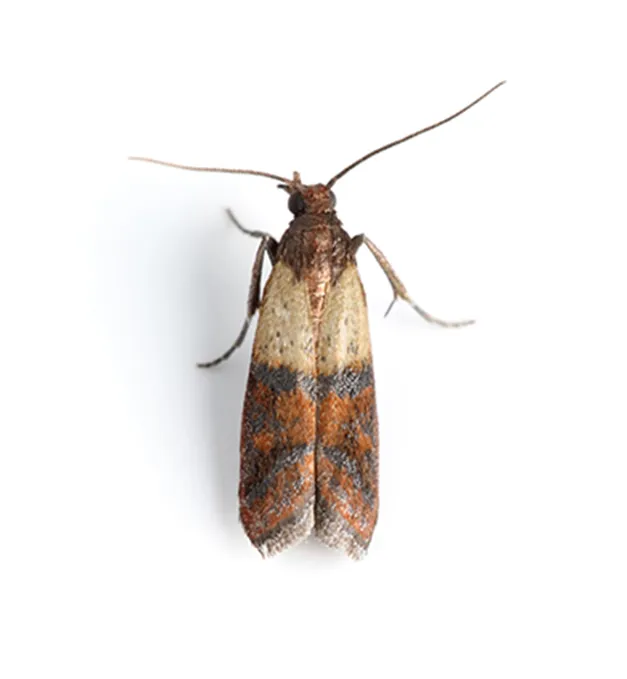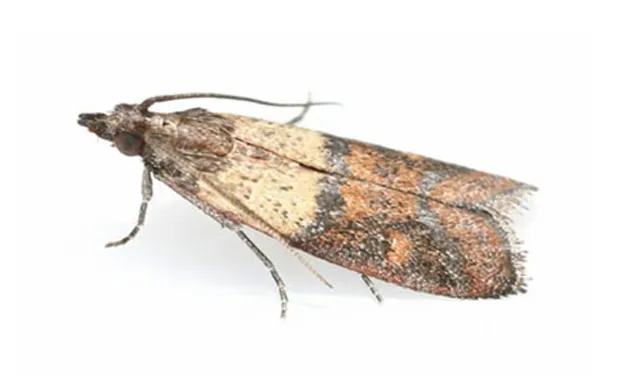Dried fruit moth is an insect species known for causing damage to dry products such as grains, fruits, and nuts typically stored in warehouses. This species inflicts damage primarily through its larvae. The larvae feed on stored products, leading to contamination and a decline in quality.
Dried fruit moth can pose a risk to human health and also leads to economic losses. Preventative measures are crucial to maintain competitiveness in both local and international markets. Combatting this pest is essential to avoid losing market power. There are several effective control methods available for this purpose.
Dried Fruit Moth Damage
The moth, scientifically known as Plodia interpunctella, is a widely distributed pest species around the world. These moths, particularly harmful to stored foods, have adults measuring 8-10 mm in length. Their forewings display a pattern ranging from reddish-brown to gray.
This moth species causes damage through its larvae. Initially white, the larvae turn pink, yellow, or greenish as they mature. The pupal stage occurs within cocoons.
Upon reaching adulthood, this species lives approximately 1-2 weeks, during which it mates and lays eggs.
The feeding areas of this pest species include:
- Wheat
- Dried fruit
- Nuts
- Grains
- Flour
- Chocolate

The larvae feed on these food products, burrowing through them and contaminating them with their excrement.
The dried fruit moth reproduces more quickly in humid and warm environments, making temperature control in storage areas a significant factor in managing this pest’s population.
Due to its biological characteristics, controlling this pest species is challenging. However, if not managed, it can cause significant damage. This species leads to substantial losses, particularly in storage and processing facilities. Producers of dried fruits and grains face significant economic losses due to the damage caused by this pest.
As a country ranking among the top in agricultural exports globally, Turkey must combat the damage caused by this species to maintain its market power.
The damages caused by this moth species include:
The moth butterfly can destroy entire stocks of stored products, which reduces the quality of the affected goods.
Contaminated products find it difficult to secure a place in international markets.
The methods used to combat this species impose extra costs on producers. Additionally, the decline in product quality can erode market confidence and damage brand reputation.
What Are the Methods Used to Combat the Dried Fruit Moth?
The methods used to combat this pest species are of great importance. These methods, which have significant effects on both human health and the national economy, include:
This method involves maintaining hygienic conditions, such as cleaning and ventilating storage facilities. For effectiveness, it is important to store products in cool and dry places.
This method involves the use of insecticides. However, caution is necessary as chemical use can damage the products. Therefore, chemical application requires great care.
This method utilizes the natural enemies of the pest species, such as parasitoids and predators.
- Reducing the use of lights in storage areas at night.
- Sealing entry points in storage areas, such as cracks and crevices.
- Installing screens on doors at appropriate intervals to prevent pest entry.
- Separating old and new products in different storage areas.

Pheromone Traps
Pheromone traps are one of the most effective and preferred methods for combating the moth species. These traps mimic the pheromone chemicals released by female moths. By attracting male moths to the traps, they are captured and destroyed by the adhesive plates within the trap.
What are the Advantages of Pheromone Traps?
Pheromone traps, one of the methods preferred by producers, offer several advantages:
- Effective for population monitoring and control.
- Reduces chemical use, thus protecting the environment and human health.
- Pheromone traps are specific to a single pest species, preventing harm to beneficial organisms.
- They are easy to use and cost-effective.
Pheromone traps are hung in wooded areas before the moths become active. The traps should be spaced appropriately and hung 1.5-2 meters above the ground. For the trap to be effective, it is recommended not to hang it in windy areas.
Regular monitoring and maintenance of these traps ensure longer-lasting use. Additionally, the pheromone capsules placed inside the traps should be checked and replaced periodically.
Pheromone traps are one of the preferred methods for pest control due to their cost-effectiveness, reduction in chemical use, and ease of use.
For detailed information on pest species and effective control methods, you can contact Kapar Organic.
Frequently asked questions about the dried fruit moth:
There are several methods used to combat this pest species. These methods include physical, cultural, biological, chemical, and biotechnical methods. The most preferred method is pheromone traps.
This moth species feeds on products such as peanuts, almonds, and figs. Dried fruits and vegetables constitute their feeding areas.
Depending on the conditions, it produces 2-5 generations per year.
